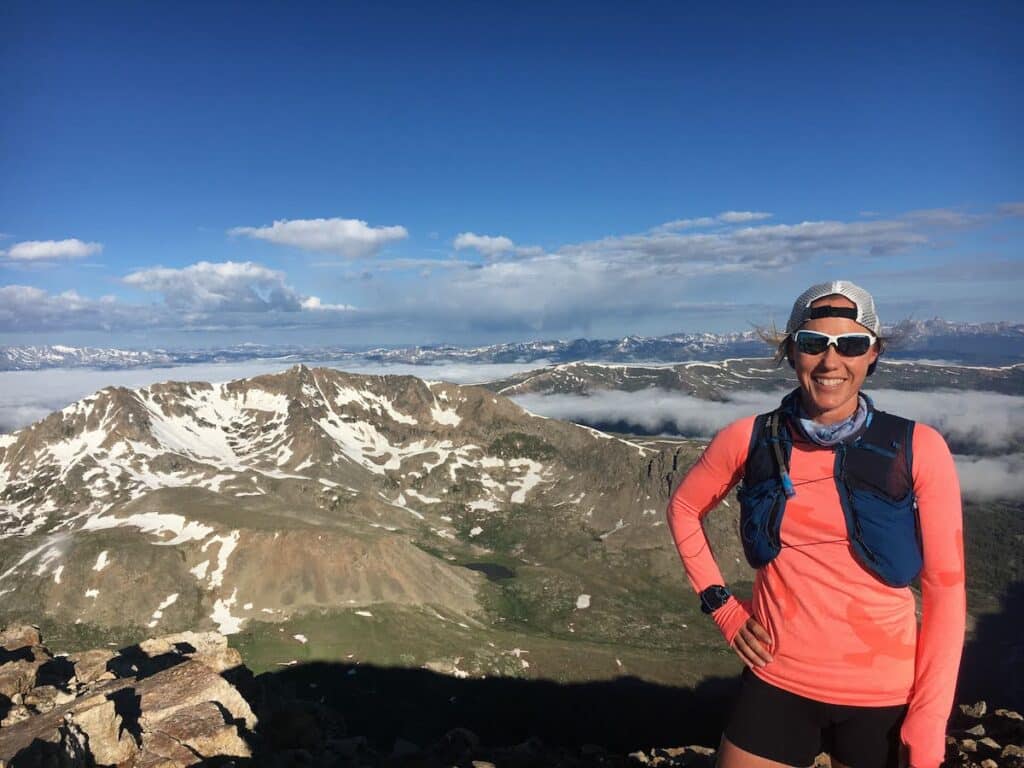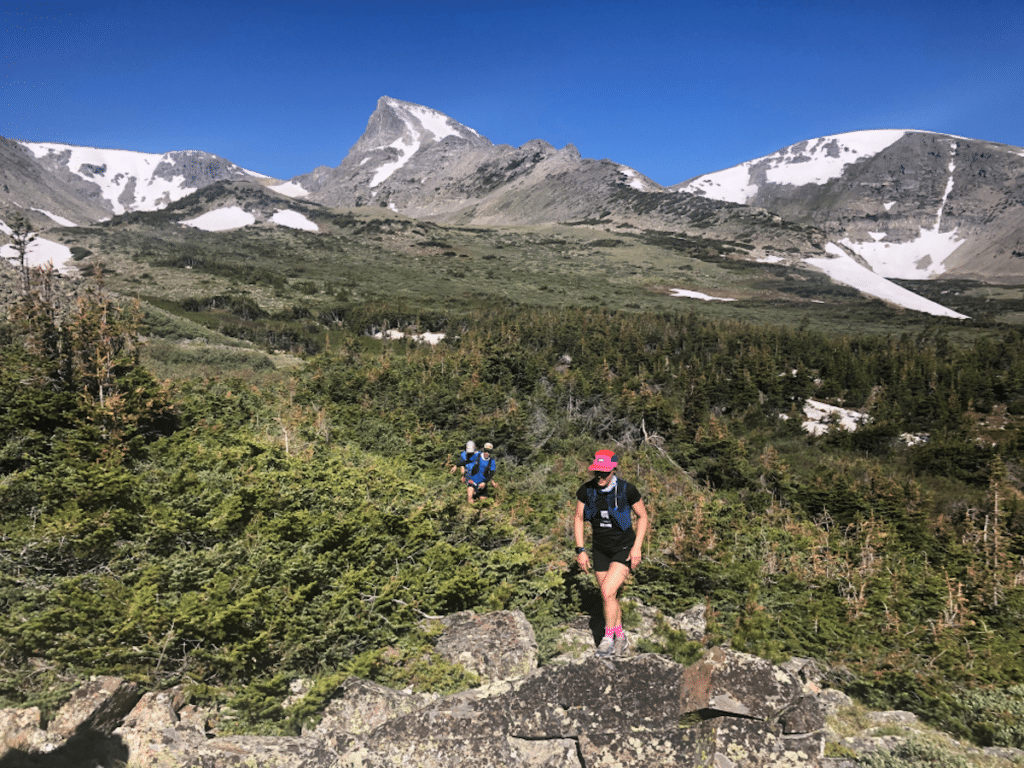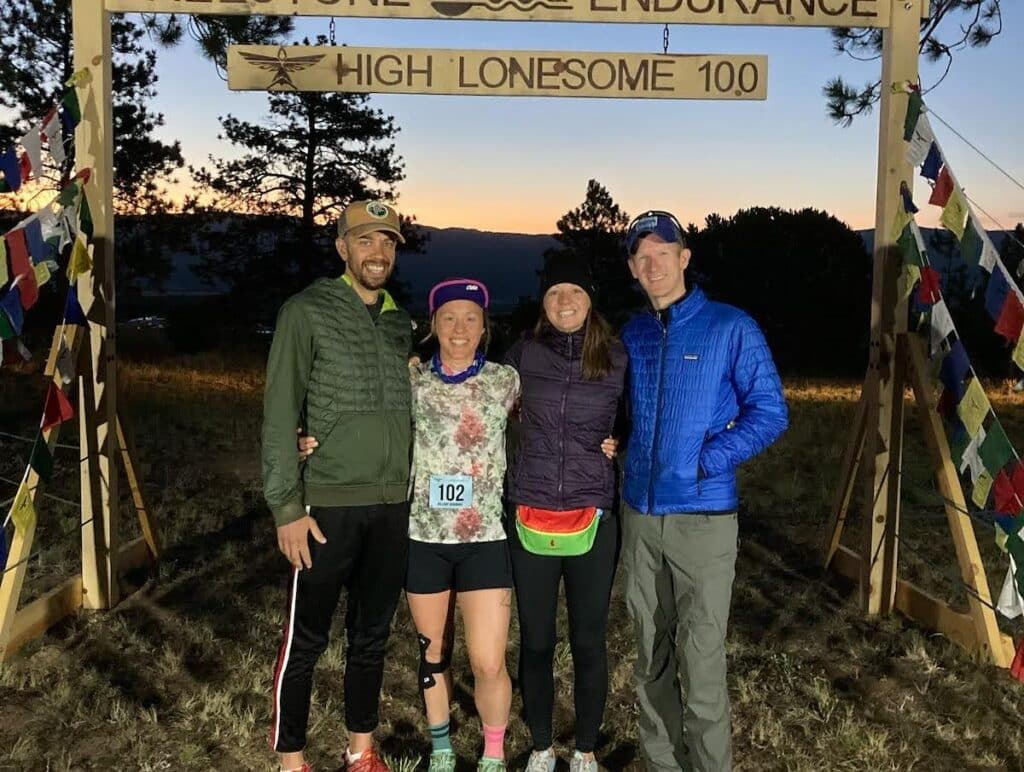Main Menu
How My DNF Taught Me My “Why”

Hillary is the founder of Blaze Strength and Endurance; a strength training and run coaching service. She is a believer in finding empowerment through movement and focusing on what we our bodies can do. She lives in Lakewood, Colorado with her husband and two girls, 10 and 12 years old. For her, any day spent in the mountains is a good day; whether it’s above tree line, hiking with the family, or reading a book at a cozy campsite.
Share This Article!


By: Hillary Osborne
I did not truly understand why I ran until I DNFed from High Lonesome 100 in 2022. When I dropped from the race, I never regretted my decision. In fact I had a lot of peace. At the awards ceremony, I accepted my whiskey bottle with pride along with everyone else who showed up at the start line. I knew my journey mattered just as much as the next runner who may have ran 30 or 100 miles on that day. The peace and acceptance around my DNF was there from the first moment I decided to drop, but the words to explain why took me almost a year to find.
Reflecting back on my 2022 training year, I see that the whole season was a struggle. I had to drag myself out the door for most runs. I never felt energetic or good while running. I bribed myself with promises of beautiful mountain views, but then typically experienced lethargy and lack of joy once I was there. Routes I had done before were taking me longer. I wasn’t adapting to training, but rather just felt continuously run down. My excitement and joy of running was hard to find. Doubt in my ability and my identity as a runner was creeping in too. But I wanted to be someone who ran through mountains and enjoyed it. I wanted to be someone who felt strong doing it. Motivation follows action, right? So I kept showing up. I kept hoping things would change and I would find my strength and my joy again. By mid June and months of struggling, I considered pushing High Lonesome to another year. But the race has a lottery and is difficult to get into. I didn’t want to squander that opportunity. I also needed to give it a try.
So I showed up at the start line and gave it my best. For the first 20 miles or so, I felt decent. I felt super strong up the first long climb to the base of Mt Antero. But as soon as I hit the treeline a flip switched and I was moving through molasses and struggling with nausea. I have never struggled with nausea before. But the downhill portion came quickly, so I kept going. It was a struggle for the remainder of the race. I found my body unresponsive, my mind unwilling. After four more mountain passes, 60 more miles, running through the night and then the heat of the day; I was absolutely spent. These hardships were nothing unique to me. Everyone who toed the line that day dealt with the same struggles I did, but I was no longer embodied. I was no longer finding the strength and satisfaction in the struggle. I was depleted and suffering.
When I got to Blanks at mile 81, I was ready to be done. My decision to drop out of the race was an accumulation of all my training and months of struggle. Blank’s aid station is just where I finally gave into the subtle signs and messages my body had been trying to send to me all year. I said ok, we can stop. I honored my body. My body had been asking for months to stop, too slow down, to rest, to replenish. And I had been ignoring those requests. After 81 miles and 32 hours of running, I said yes. Yes to rest, yes to taking care rather than pushing through.

It has taken me many months to find the way to explain why my DNF felt right. After months of reflections, I finally am able to identify that I run to be embodied. When I run I feel strong, capable, and powerful. I notice that it is the strength in my legs that carries me up a steep mountain side. I have gratitude for the repetitive rhythm of running and the distance I can travel. Standing on top of mountain peaks and seeing beautiful sights because my legs carried me there is a sense of power I love. I rarely disassociate from my body while running. Even when I feel pain, I notice and accept it for part of the process. I don’t use running to fight my body into submission. When I ran my first 100 mile race in 2021, I had pace stopping knee pain at mile 30 out of nowhere. I dealt with it by feeling all the pain and accepting the situation. I focused on what I could do; hike downhill and run the flats. I run to feel. This is how I trust my body. My body and I have a deal; I care for it with sleep and rest and food and work and it will allow me to climb mountains, it will carry me over miles, and it will do it day after day. Last year I broke that deal. I did not hold up my end of the bargain. I slacked off on sufficient food and rest and asked for too much work. This is how I know the difference between pushing through knee pain for 70 miles and stopping at mile 81 of a 100 mile race.
Since High Lonesome, I have learned that my struggle was a low energy problem. I was not supporting the work I was asking my body to do with adequate nutrition. After working with a dietician at Fly Nutrition, the biggest thing I learned was that I was not eating enough carbohydrates. Period. It was not out of intentional restriction or concern about losing weight, but rather unhelpful societal messages about portions and villainizing carbs. I learned about matching portions with the intensity and volume for the day. Most days, I was just meeting the recommended amount for an easy training day even though I was running consecutive hard training days. That deficit adds up day after day, week after week, month after month.
For me, low energy availability did not mean losing my period or a bunch of weight. It showed up like dragging myself through a 45 minute run, it showed up in not having energy to do anything else with my day. It looked like needing a nap everyday and being unmotivated. It looked like not being present for my kids. It looked like going through the motions. It looked like never feeling like my strong, energetic self on long runs. It looked like constant doubt and wondering if I should just bag it in. Most of all it robbed me of joy from an activity I once got so much fulfillment from.
In ultra running, we talk about doing races to find our limits and pushing past them. Often to the point of glorifying suffering. Elements of that all have their place, but sometimes we need to be just as mindful of our bodies and listen. On that day of that year that I ran High Lonesome, 81 miles was my limit. It doesn’t mean that I am not capable of running 100 another day. It just means it was not happening on that day. It was a dot on my long timeline of running. I believe that if I listen to what my body is telling me and continue to run to feel embodied then I will have a long future in running.

About the Author

Hillary is the founder of Blaze Strength and Endurance; a strength training and run coaching service. She is a believer in finding empowerment through movement and focusing on what we our bodies can do. She lives in Lakewood, Colorado with her husband and two girls, 10 and 12 years old. For her, any day spent in the mountains is a good day; whether it’s above tree line, hiking with the family, or reading a book at a cozy campsite.
Share This Article!













One Response
Thank you so much for this candid essay.